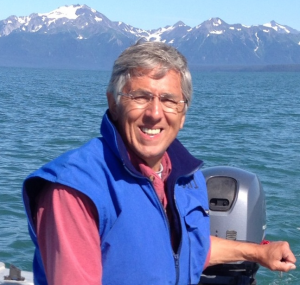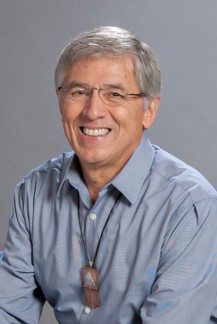AARP Alaska, along with Anchorage middle schools, hosted both a gubernatorial and senatorial forum on Wednesday. About 100 people showed, most of whom were middle school students and the questions were written by them. First up: The three candidates for governor—Democrat Byron Mallott, independent Bill Walker, and incumbent Republican Gov. Sean Parnell, who answered about 45 minutes worth of questions ranging from education, resource development, social security and healthcare. Many of the students were engaged, at least initially and were trying to understand. Others weren’t and couldn’t,
This was the second gubernatorial forum of the week. On Monday, the event was hosted by the Anchorage Chamber, and allowed for more back and forth, along with slight tension between Walker and Parnell, mostly over the natural gas pipeline. Walker doesn’t believe that the current plan in the works will get a gasline built. At the forum on Wednesday, Walker again lamented all the wasted years and hundreds of millions of dollars studying the gasline, and Parnell again said that the state is closer than ever.
But there was no heat in the exchanges. The candidates were limited to 60 second answers. Of all the candidates, the format suited Mallott the best, who has so far focused on generalities and platitudes and has shied far from specifics. About as specific as he got was when he said that his first act as governor would be to accept federal money to expand Medicaid, something that Parnell rejected. Walker said he would also expand the program, as long as he was assured that the feds would pick up 100 percent of the tab.
Parnell told the crowd, that those who would qualify for Medicaid already get access to primary care and emergency rooms “free of charge.”
If they hadn’t before, this is probably where they lost the children.
The group of 10 or so that I talked to after said that they didn’t understand a lot. One of them said they liked that Mallott talked more than the others about education. A few of them said that Walker seemed confident. Most of them said that they liked Parnell and felt more comfortable with him than with the others.
Up next was the GOP Senate forum, featuring Joe Miller, Lt. Gov. Mead Treadwell, and Dan Sullivan. This, too, was this group’s second time meeting. The last, moderated by KTUU Channel 2’s Steve MacDonald, wasn’t live, and lacked energy, at least the kind of energy that Sullivan appears to feed on. This one also contained few fireworks. The candidates spoke about federal government overreach, about honoring our vets, and about social security.
Miller said that he would work to privatize the program for those under 50 years old, which likely didn’t go well with the seniors in the group. The two others talked around the issue, but didn’t, like Miller, address it head on. Treadwell said that we’ve got to be “flexible,” when thinking about how to save social security. Sullivan said that when the country elects “serious leaders” there’s an “opportunity for serious reform.” He didn’t elaborate.
All three candidates oppose federal government overreach. All said they would focus on the youth. And all agreed that the minimum wage hike that’s being debated in Congress should be left up to individual states.
After it was over, the kids didn’t remember much of what they said, and were mostly stymied when I asked which one they thought did the best job. One said that they thought Treadwell’s experience was important. A few of the more outspoken ones said that Sullivan connected most with the audience. All of them remembered when Sullivan asked for a show of hands of all those who had done their homework the night before.
After about half the room raised them, he said that the passing of ObamaCare was a great example of legislators not doing their homework. “It was legislative malpractice,” he said. “Not healthcare form.”
One of the students after said she was surprised how few of her peers didn’t do their homework. She also said that she had wished social issues, like gay marriage, had been discussed.
Another said that he had heard a lot about ObamaCare. Then again, he was U.S. Rep. Don Young’s grandchild. His grandfather comes over for dinner a lot, he said, and talks a lot.
“About politics?” I asked.
Yes, the boy said. A lot about ObamaCare.
Contact Amanda Coyne at amandamcoyne@yahoo.com



 Campaign disclosure reports were due on Tuesday, and there were a few surprises in the money game. For one, GOP lieutenant governor candidate Alaska state Sen. Lesil McGuire out-raised Anchorage Mayor Dan Sullivan, who is also running for the seat. On the Democratic side of the aisle for lieutenant governor, relatively unknown Bob Williams sort of out-raised Sen. Hollis French. In the race for governor, Democrat Byron Mallott raised more than expected, but he spent more than expected too. Read on for details.
Campaign disclosure reports were due on Tuesday, and there were a few surprises in the money game. For one, GOP lieutenant governor candidate Alaska state Sen. Lesil McGuire out-raised Anchorage Mayor Dan Sullivan, who is also running for the seat. On the Democratic side of the aisle for lieutenant governor, relatively unknown Bob Williams sort of out-raised Sen. Hollis French. In the race for governor, Democrat Byron Mallott raised more than expected, but he spent more than expected too. Read on for details.

